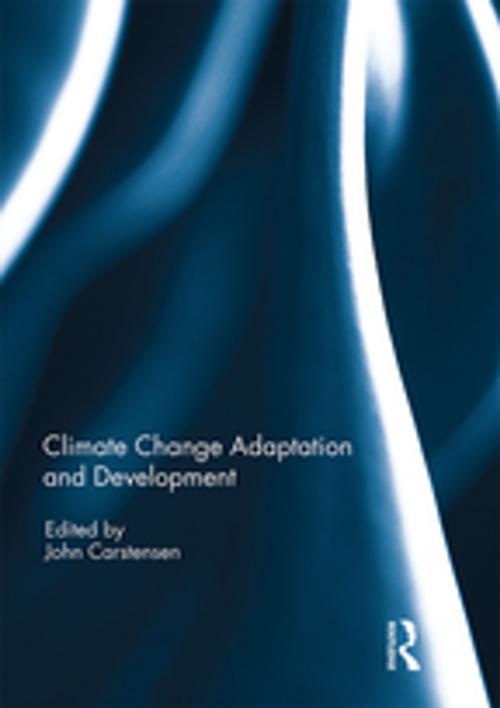Climate Change Adaptation and Development
Nonfiction, Social & Cultural Studies, Social Science, Human Geography, Science & Nature, Nature, Environment, Environmental Conservation & Protection, Science, Earth Sciences| Author: | ISBN: | 9781315525471 | |
| Publisher: | Taylor and Francis | Publication: | April 19, 2018 |
| Imprint: | Routledge | Language: | English |
| Author: | |
| ISBN: | 9781315525471 |
| Publisher: | Taylor and Francis |
| Publication: | April 19, 2018 |
| Imprint: | Routledge |
| Language: | English |
Climate change is real and it is man-made. We have put so many greenhouse gas pollutants into the atmosphere that we will see significant and long-term change that we need to adapt and adjust to. It is important for development practitioners to understand these impacts and the challenge of how and when to adapt to climate change.
There are plenty of grim presentations of what the extremes of the possible climate scenarios will throw at us over the next 100 years, but not all change will be disastrous; some change will be beneficial, but much of the change will happen at an unprecedented rate that will require the best possible analysis and understanding of how and when we should adapt to climate change.
This is important for development practitioners as we invest in ensuring that poverty is reduced and eliminated and the well-being of everyone is improved. Many countries and communities around the world are vulnerable to the impacts of climate change, but developing economies may on one hand be less resilient to the impact, but could on the other hand be in a better position to make their development climate smart by making the most efficient use of their economic resources.
The chapters in this book shine a light on the complexity and the multi-dimensional aspects of climate change adaptation. They gather some of the experiences of addressing climate change impacts in a development context. This book was previously published as a special issue of Development in Practice.
Climate change is real and it is man-made. We have put so many greenhouse gas pollutants into the atmosphere that we will see significant and long-term change that we need to adapt and adjust to. It is important for development practitioners to understand these impacts and the challenge of how and when to adapt to climate change.
There are plenty of grim presentations of what the extremes of the possible climate scenarios will throw at us over the next 100 years, but not all change will be disastrous; some change will be beneficial, but much of the change will happen at an unprecedented rate that will require the best possible analysis and understanding of how and when we should adapt to climate change.
This is important for development practitioners as we invest in ensuring that poverty is reduced and eliminated and the well-being of everyone is improved. Many countries and communities around the world are vulnerable to the impacts of climate change, but developing economies may on one hand be less resilient to the impact, but could on the other hand be in a better position to make their development climate smart by making the most efficient use of their economic resources.
The chapters in this book shine a light on the complexity and the multi-dimensional aspects of climate change adaptation. They gather some of the experiences of addressing climate change impacts in a development context. This book was previously published as a special issue of Development in Practice.















